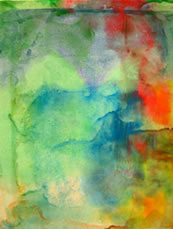Officially known as Jin Shin Jyutsu® Physio-Philosophy, this practice is a disarmingly simple style of acupressure. It works with a set of 26 points (called Safety Energy Locks or SELs) along energy pathways. When a pathway becomes blocked, energy stagnates. This initially affects the local area of stagnation, but has the potential to create imbalance along the entire pathway. The 26 Energy Locks are the locations on the body where energy tends to become stuck. (Acupressurists and acupuncturists, by comparison, learn over 300 points.)
A Jin Shin Jyutsu practitioner uses both hands (referred to as “jumper cables”) to hold a combination of SELs. The very simplicity and gentleness of the process allow clients to relax and receive the work. As the SELs release and balance is restored, the client experiences physical, mental, and spiritual harmony.
Jin Shin Jyutsu is actually an ancient healing practice. Master Jiro Murai, a Japanese healer and philosopher, rediscovered it in the early 20th century. Murai was led to Jin Shin Jyutsu in response to his own health problems. In his youth he was known for his reckless, overindulgent nature, entering (and winning!) contests that involved consuming immense quantities of food and drink. At the age of 26, he became seriously ill and doctors diagnosed his condition as incurable and terminal.
Murai asked to be left alone in his family’s mountain cabin. As he passed in and out of consciousness, he had visions of spiritual masters using hand mudras, which he began to practice on himself. On the seventh day he underwent an intense healing experience. He vowed to devote his life to discovering the connection between the hand mudras and his dramatic recovery. (See The Jin Shin Jyutsu finger mudras.)
Murai looked for clues in the Bible and also studied extensively in ancient Chinese, Greek, and Indian texts. He practiced his healing techniques on the homeless in Tokyo, where he developed a reputation as an extraordinary healer. In the story I’ve heard, the brother of Japan’s Emperor (Hirohito) was suffering from an ailment that doctors had been unable to cure. Murai was asked to treat the Emperor’s brother and had great success. In gratitude, the Emperor asked Murai what he would like in return. Murai asked for access to ancient records (the Kojiki) in the Archives of the Imperial Palace. It was these writings that provided information on the origins, philosophy, and techniques of Jin Shin Jyutsu.
According to these records, Jin Shin Jyutsu was widely known in antiquity — before the time of Buddha, Moses, and the Kojiki (712 AD). The practice was handed down orally from generation to generation, but had virtually disappeared by the 20th century. Using all the information he had uncovered, Murai conducted extensive experiments on himself for over 50 years. He found that Jin Shin Jyutsu produced a depth of awareness that went beyond anything described in the ancient texts of Chinese medicine.
Mary Burmeister, a Japanese American, met Murai in Japan in the late 1940’s and became his student. Burmeister’s explanation for the depth and power of Jin Shin Jyutsu is that it affects the attitudes that lie beneath our symptoms, not just the symptoms themselves.
The belief that we can help ourselves through a process of knowing ourselves is integral to Jin Shin Jyutsu. At its heart, the work embodies a life of simplicity, calmness, patience, and self-containment. Practitioners of the work regard Jin Shin Jyutsu not simply as a style of bodywork, but as a philosophy of life. Ultimately it is the philosophy and spirit of the work, not the technique, that attracts clients and practitioners to Jin Shin Jyutsu.
People often learn of Jin Shin Jyutsu by word of mouth, when someone who’s had a positive and dramatic experience of the work recommends it to a friend. It’s often used as a complement to conventional healing methods. One of its great advantages is that one can easily learn simple self-help techniques that supplement sessions from a practitioner.
Mary Burmeister, who returned to the United States in the 1950’s and devoted her life to Jin Shin Jyutsu, did not believe in promoting her work as a business. Although she never advertised her courses or her private practice, she attracted students from around the world and had a waiting list of over a year for private sessions. Today Jin Shin Jyutsu is taught worldwide. An intensive series of sessions from close associates of Mary Burmeister is available in Scottsdale, AZ (see the official Jin Shin Jyutsu site for more information).
The translation of Jin Shin Jyutsu is “The Art of the Creator through Compassionate Man.” The Jin Shin Jyutsu Outreach Program sponsors projects offering free Jin Shin Jyutsu sessions for children with “deep needs” and their families, for hospice residents and their families, and free self-help classes for international communities that are isolated, have insufficient medical facilities, or are in financial distress.
(For the most recent posts on Jin Shin Jyutsu, click on the Jin Shin Jyutsu tag on the right.)

